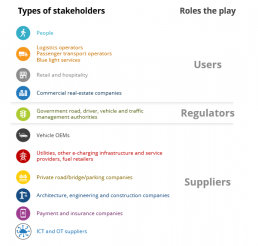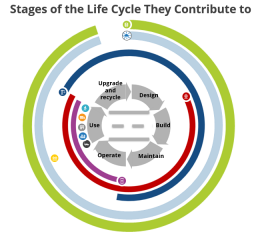The internal combustion engine was one of the most disruptive technologies of the past 150 years. It had long-term ripple effects not only on how fast and conveniently people and goods move, but also on our shopping and leisure habits, urban planning, and individual health and well-being. Some of these impacts were arguably negative; such as time wasted in congestion, pollution, and traffic accidents. To address those externalities policymakers, government traffic and transportation departments, car OEMs, and mobility ecosystems are reinventing vehicles and business models to reduce those externalities and eventually deliver on the promise of convenient, affordable, accessible, safe, and environmentally sustainable mobility.
The transition to next-generation mobility will depend on a new generation of vehicles that are connected, autonomous, and electric on shared and public mobility, and on rethinking urban planning to make it convenient and safe for people to switch to less impactful ways of moving such as cycling and walking. These new mobility models can deliver the expected benefits only if the way roads are designed, built, operated, maintained, used, and upgraded is transformed to make them possible.
Growing Investments in Smart and Sustainable Roads
Investments in smart and sustainable roads are flourishing in Europe and beyond. Examples include:
- The UK National Highway and Connected Places Catapult’s £1.7 million joint financing to fund innovative ideas and proofs of concept (POCs) for net-zero carbon road maintenance and construction materials and processes
- The city of Gothenburg is working with Volvo and other partners to test dynamic low-emission zones
- Italy’s highway and road authority Anas’ €1 billion plan to equip 3,000km of interurban roads with intelligent road systems and e-charging infrastructure
- Cities around the globe nudging logistics service providers to use smart pick-up and drop-off zones for delivery trucks, such as Barcelona which plans to impose a yearly tax on transport companies fulfilling home deliveries for using public spaces, to eventually nudge consumers to venture out to collect their own parcels (companies with a turnover of more than €1 million would have to pay an annual income-based tax of 1.25%)
Smart, sustainable roads are not to be intended merely as the instrumentation of roads with sensors and actuators to enable intelligent traffic management use cases, but it should be considered from a wider perspective. We define smart, sustainable roads as the intelligent use of technology across road design, construction, operation, maintenance, usage, and upgrade and recycle of materials to:
- Reduce cost of ownership and increase environmental sustainability across the design, construction, operation, and maintenance life cycle of physical road elements
- Enhance convenience, affordability, accessibility, safety, and environmental sustainability for the movement of people and goods
- Increase prosperity by enabling businesses to profit from new and existing economic activities related to designing, building, operating, maintaining, using, and decommissioning roads.
Next-Generation Use Cases Emerging at the Intersection of Multiple Industries
Smart roads are systems of systems. The value of technology innovation, such as IoT, AI, satellite imaging, lidar and electric mobility, is realized at the intersection of a network of stakeholders, the outcomes they aim to achieve, and the capabilities they need to implement to deliver those outcomes.
The Smart and Sustainable Roads Stakeholder Ecosystem
For example, to realize the benefits of:
- Electric mobility. Utilities, engineering and construction contractors, and road authorities need to work together to establish an accessible and affordable charging infrastructure; vehicle OEMs need to expand the number and battery range of electric and hybrid vehicles that they offer; payment providers must enable seamless settlement across different electric charging service providers; technology suppliers need to work with OEMs to embed connected vehicle capabilities for vehicle-driver interaction (e.g., trip planning, charging locations, pricing options) and vehicle-grid interaction (e.g., for smart charging and V2G applications).
- Low-emission or low-speed zones. Road authorities must work with technology suppliers to embed sensors in the infrastructure to count and monitor the number and type of vehicles, and they must share data with traffic departments to ensure enforcement of low-emission and low-speed regulations. Vehicle OEMs must embed connected and autonomous driving capabilities in their cars and trucks to make it easier for drivers to comply with regulations.
- Multimodal mobility as a service. Public transit operators must work with micromobility and shared mobility operators to enable integrated journey planning and payments, while road and traffic authorities must set up incentives, such as dynamic road pricing, to nudge people to explore options, beyond driving their own cars, while insurance providers need to offer plans that cover multimodal trips, rather than vehicle ownership.
To accelerate the convergence towards smart and sustainable roads ecosystem:
- Governments should evolve regulations and standards and monitor the impact of safety, accessibility, environmental sustainability and road service pricing policies.
- Transport operators, utilities and OEMs should connect their products and services to road infrastructure, such as traffic systems and e-charging systems to expand service offerings.
- Financial services should invest in smart road payment and insurance offerings.
- Retailers should scale on-the-move targeted advertising and shopping.
- AEC companies should invest in digital twin to increase the effectiveness and efficiency of designing, building, maintaining, and upgrading smart roads.
If you want to know more, please reach out to Massimiliano Claps




